This interesting observation occurred early one morning at McInnish Park in Carrollton, Texas.
There is a fairly good sized marshy area near the entrance to McInnish Park. As I drove by this area I noticed a large adult Nutria feeding in the lush grass and clover growing between the water and the road.
I took a few quick pictures through the window of my truck and then gingerly exited the vehicle to attempt to get closer. It was to no avail. As soon as I stepped out, the nutria hightailed it for the water. I managed a few photographs as he swam across the pond, and a few more before he disappeared into the reeds on the far side of the water.
At that point, I began to look around. I soon noticed a suspicious looking clump of brown near the south end of the pond. I began working my way around the edge of the water and started taking pictures as I approached.
Because of the distance and intervening reeds, it was hard to make out what kind of animal I was observing, but the brown fur was unmistakable. I was fairly certain it was another Nutria, but there was something unusual about what I was seeing—something I couldn’t quite put my finger on.
It wasn’t until I was home that I discovered the full extent of what I had recorded with my camera. After reviewing my pictures, I discovered that there were actually three Nutrias present in that particular location. What’s more, some of the photographs revealed another group of Nutrias a little further down the bank that I never even noticed while I was on site.
I took pictures of these Nutrias for several minutes, and then decided it was time to get on with exploring the rest of the park. I made a deliberate survey of McInnish, stopping for a few choice photographs when the opportunity presented itself. About an hour and a half later it was time to leave.
On my way out, I decided to make one more pass by the marsh near the entrance, and I was glad I did. There in the thick green grass of the bank was not one Nutria, but a whole family of them! It was a mother with her five recently weaned kits.
The routine from my first encounter was repeated again. First there were pictures taken through my windshield. Then, I made the obligatory attempt to photograph the Nutria from outside of my vehicle.
The large rodents did not appreciate the attention and quickly made for the water. The mother and three of her kits swam for the far side of the pond, but the other two youngsters were not as cautious. These two Nutrias lingered near my side of the pond and allowed me the opportunity to take a number of candid photographs.
So, why did these two juveniles decide not to flee? It is my impression that the irresistible draw for these two kits was the green vegetation they had been feeding on when I arrived. Evidently it is a delicacy and they had not yet had their fill. They stubbornly waited for me to leave as they floated just off shore.
While I was taking pictures of the youngsters, another adult Nutria exited the reeds at another point on the bank and swam past my location. That was a total of six Nutrias swimming in this small pond at the same time. I have never seen anything like it before!
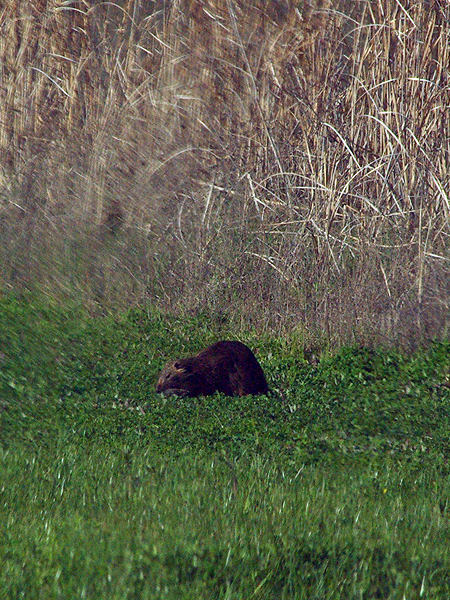
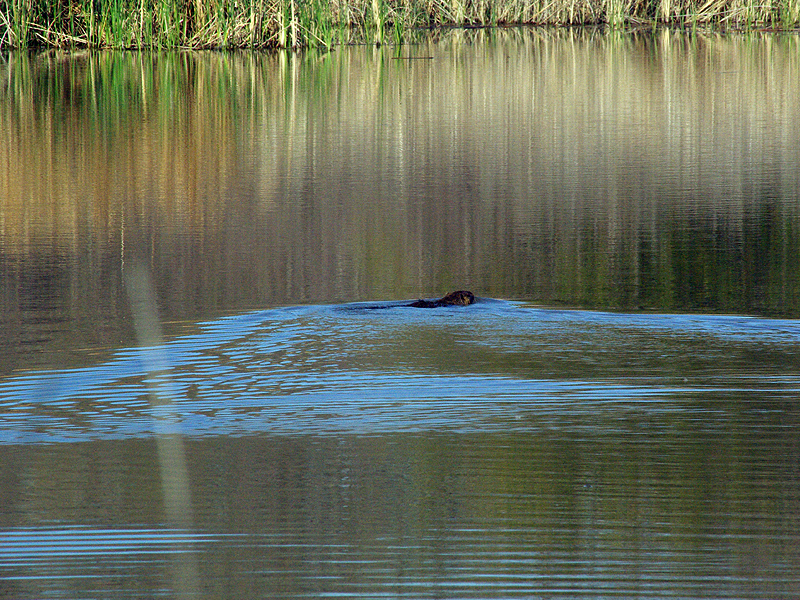
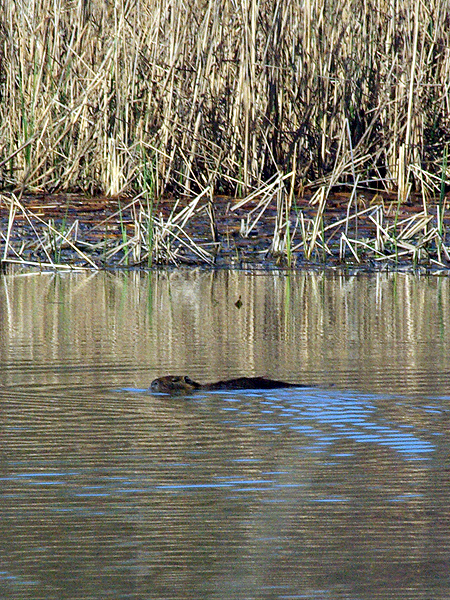
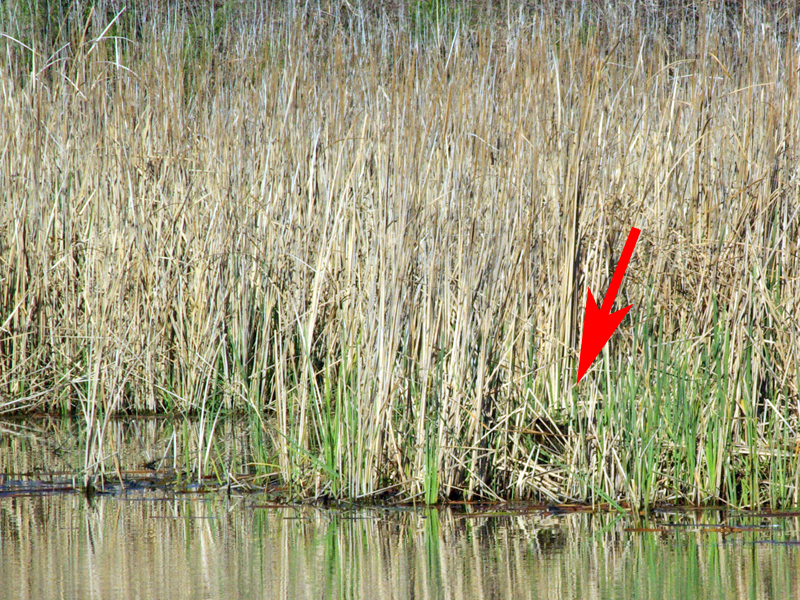
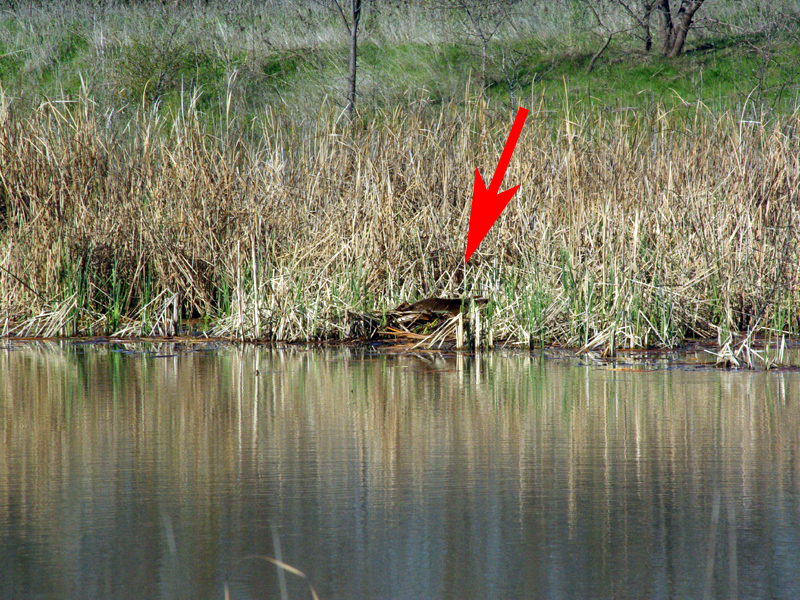
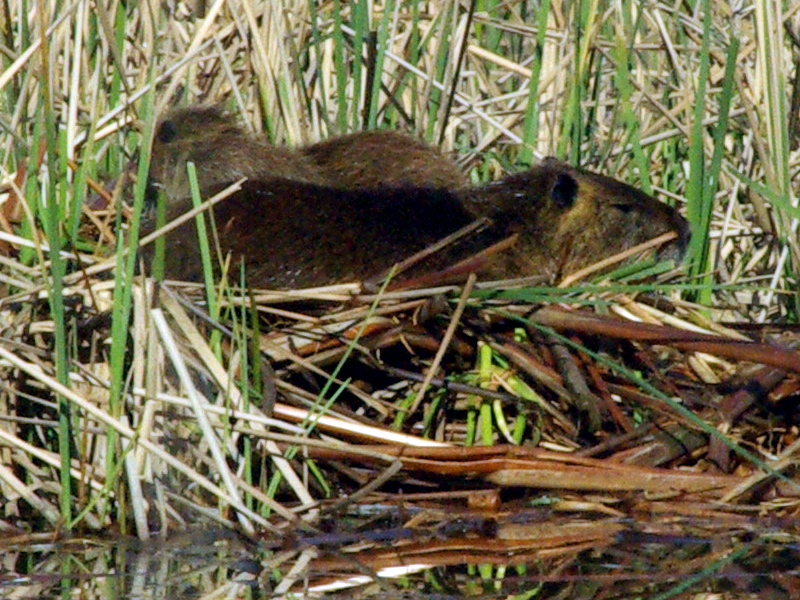
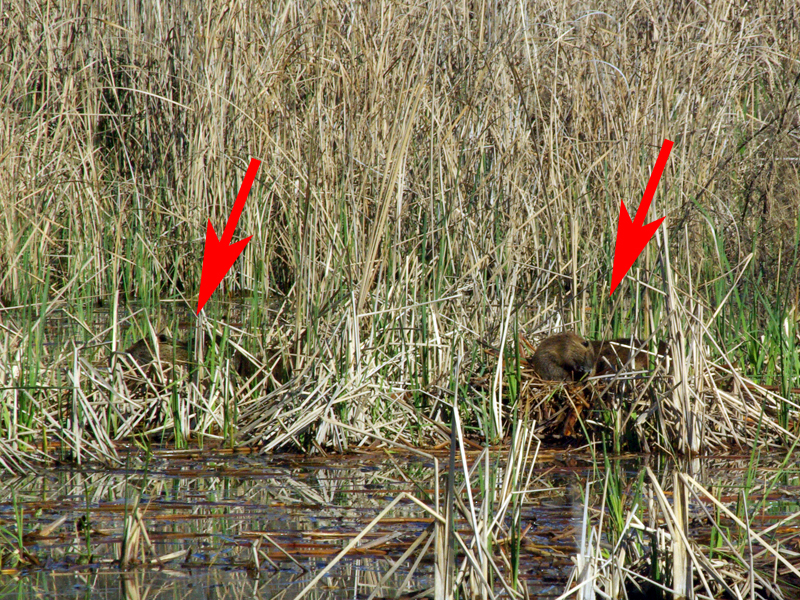
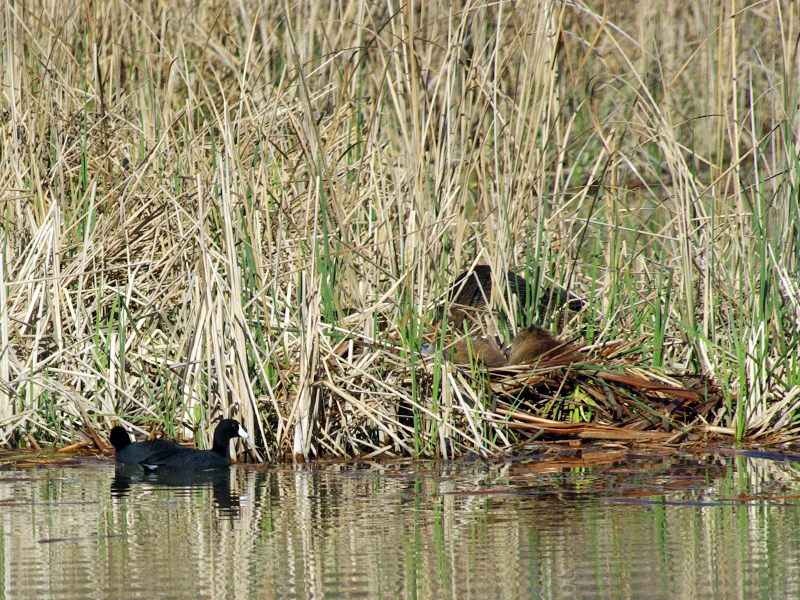

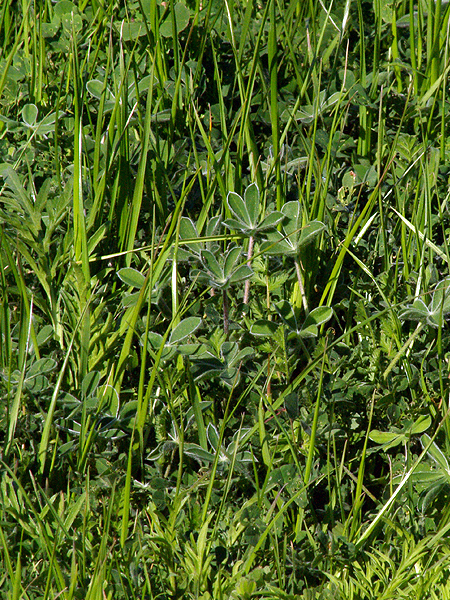
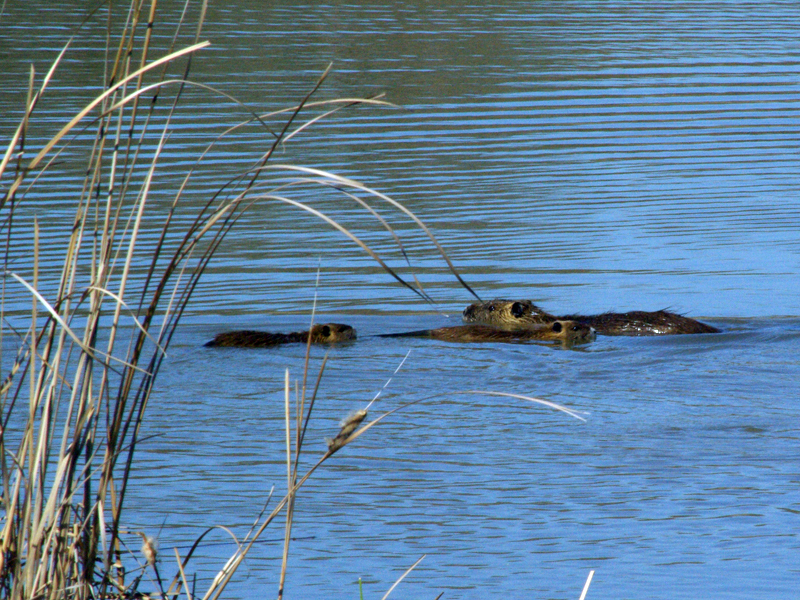
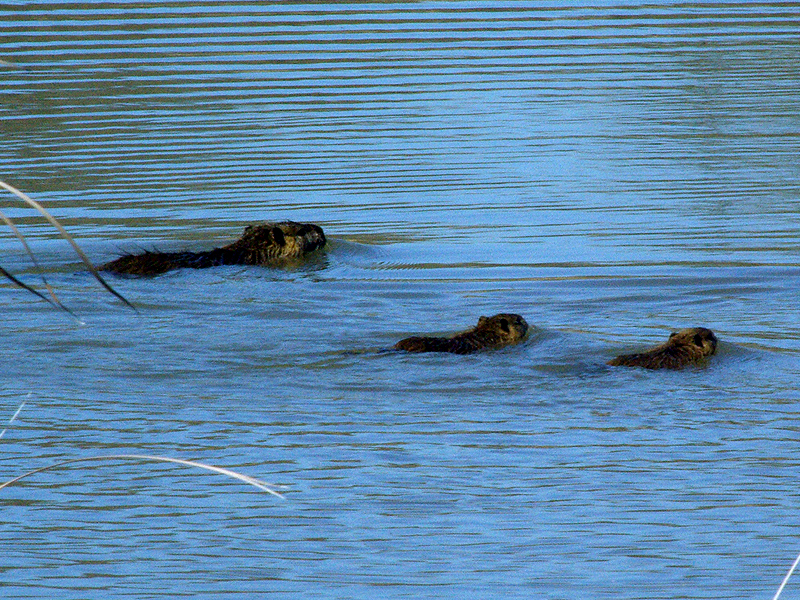


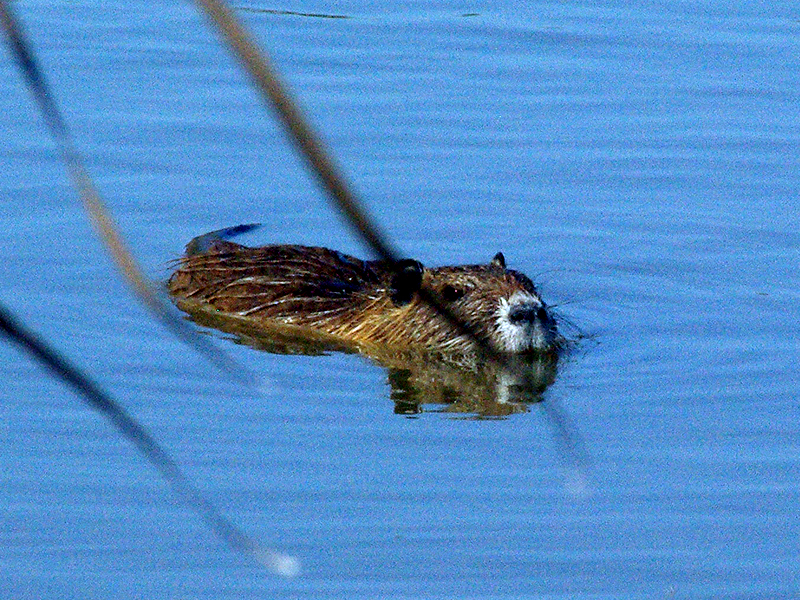
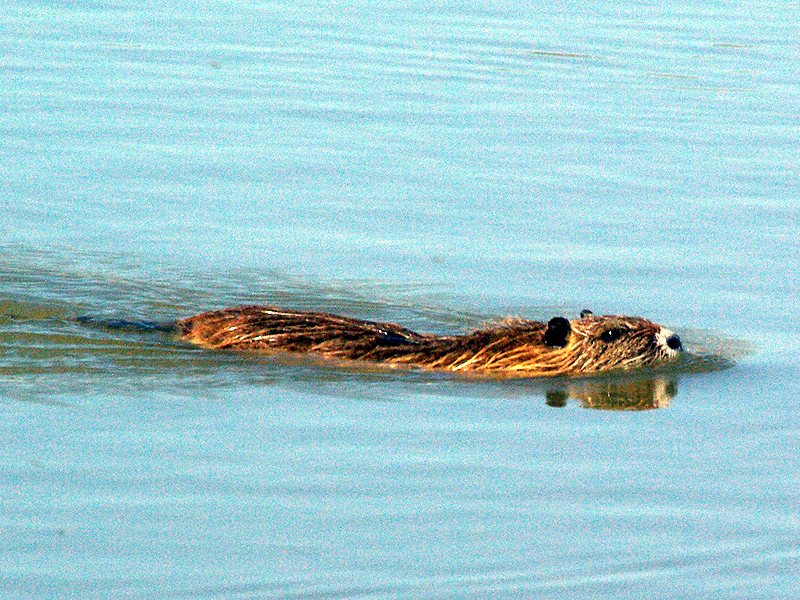
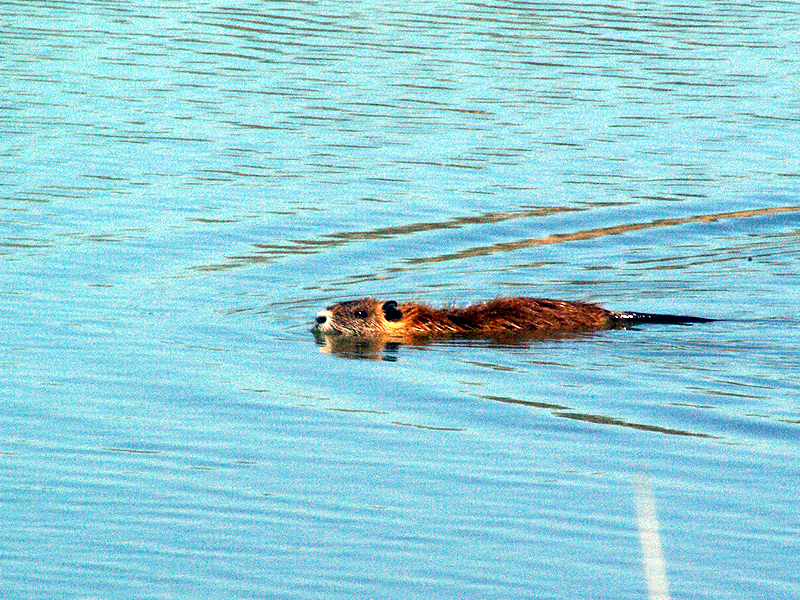
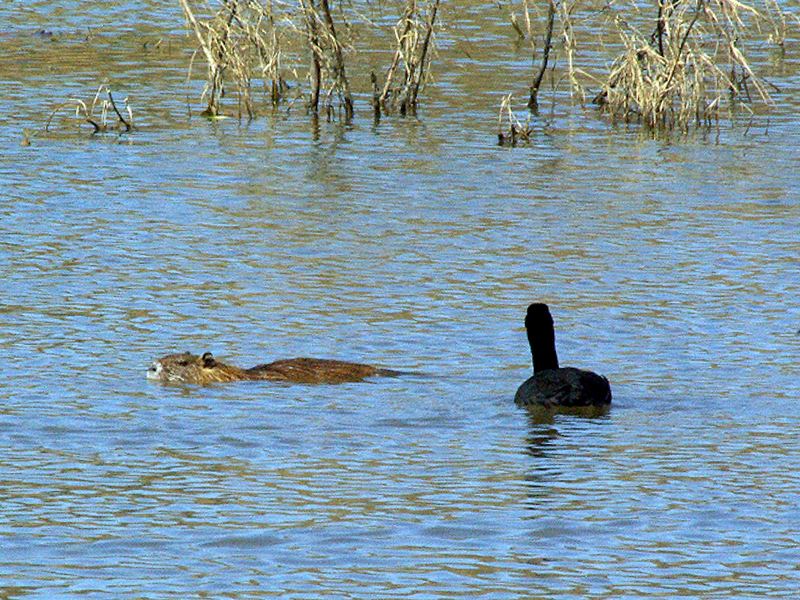





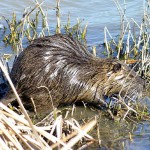
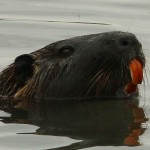
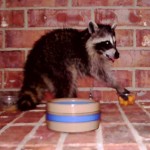


I have been exploring McInnish and Josey Ranch Lake for a few years now with camera and saw the same rodents at both parks. They are fun to watch and have very orange teeth! When first sighted at Josey, I was informed by a park regular that they were muskrats so that is what I have been calling them. Online research has not produced any clarification either. What do you base your identification on for nutria? I really would like to feel confident in my identification/change my photo titles if necessary.
The orange teeth seem to be key. Nutria are larger that Muskrats too. The distribution maps show muskrats ranging into the DFW area, but I’ve never seen one. This page has a good treatment on the subject: Nutrias vs Muskrats